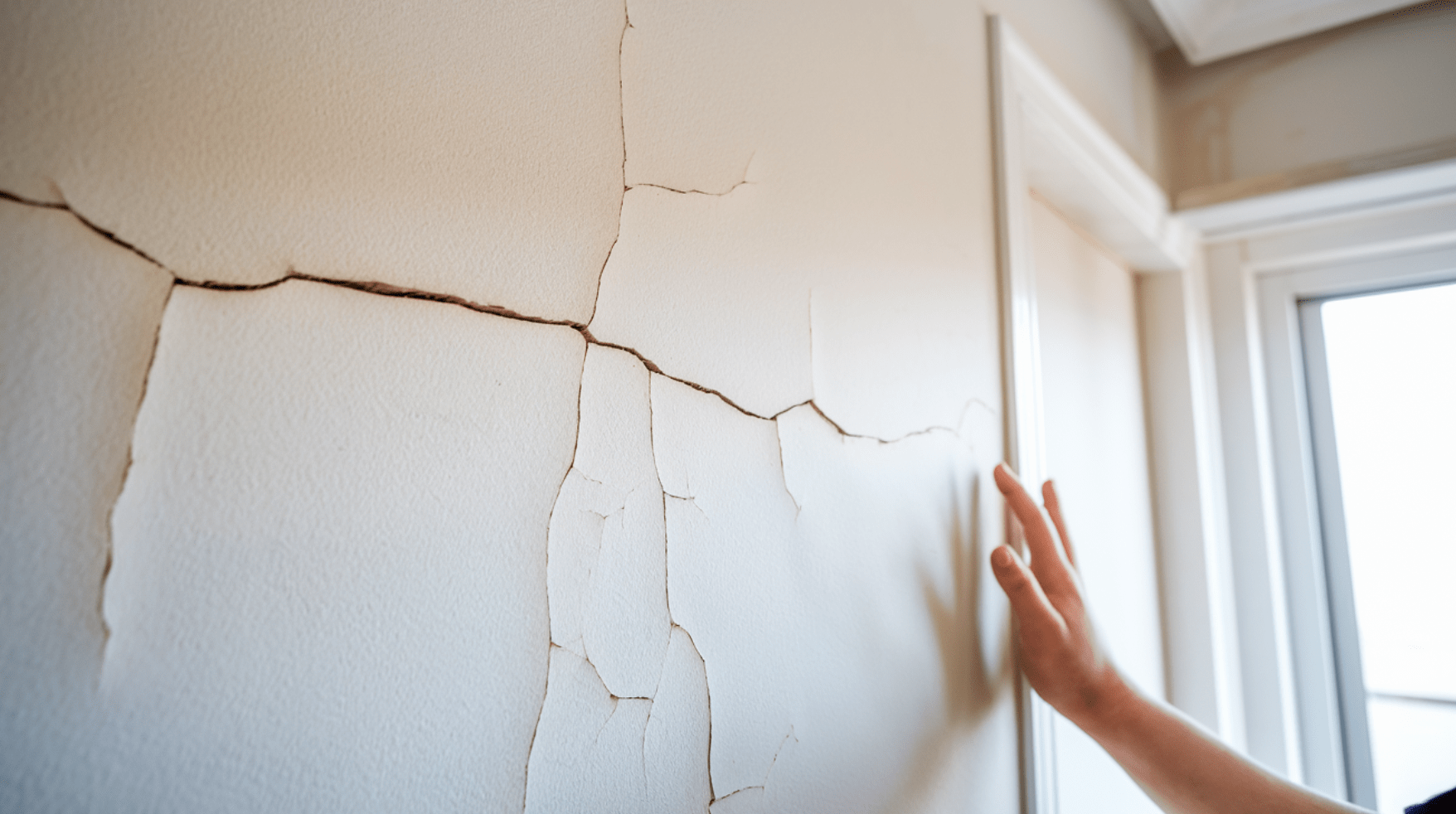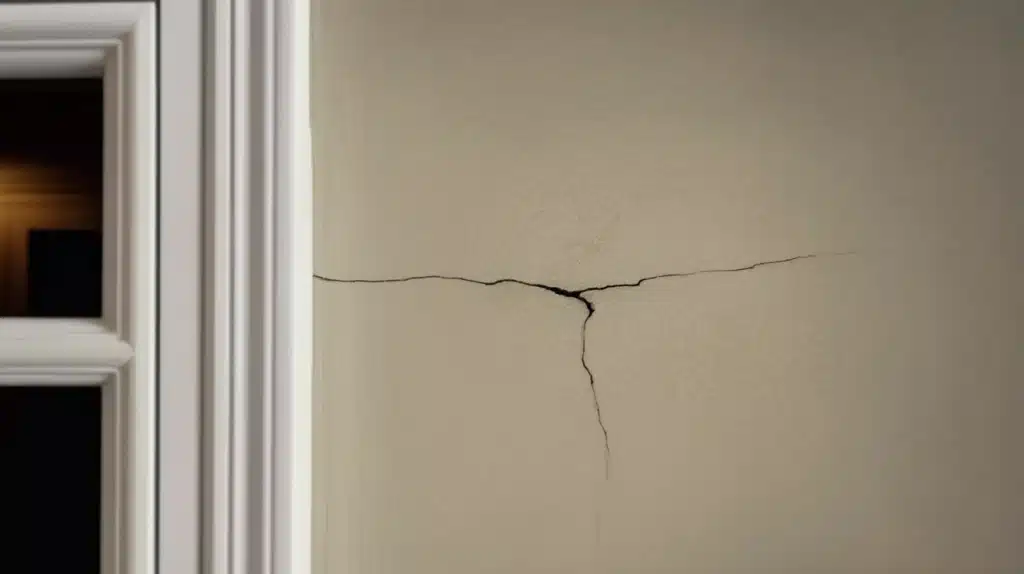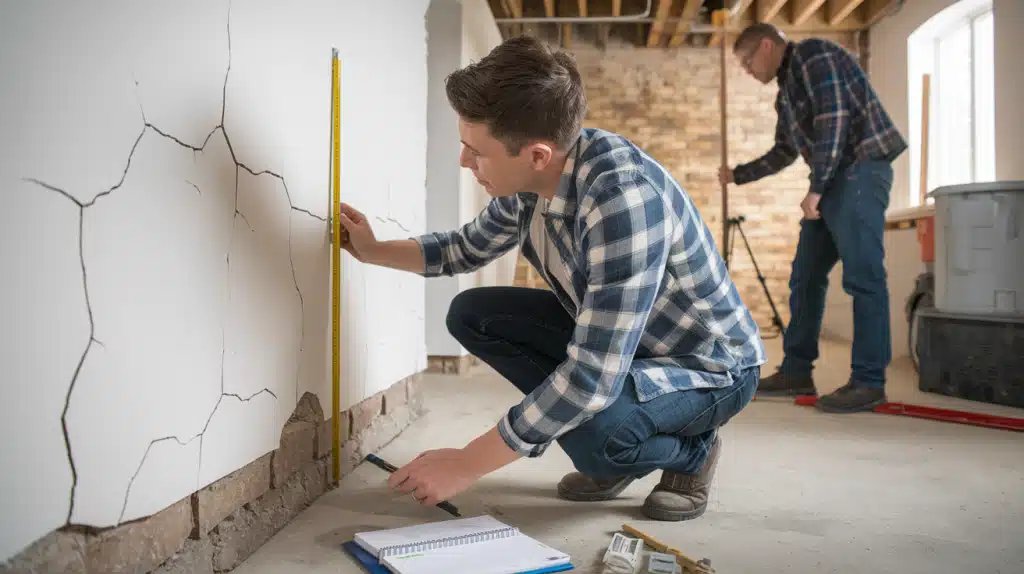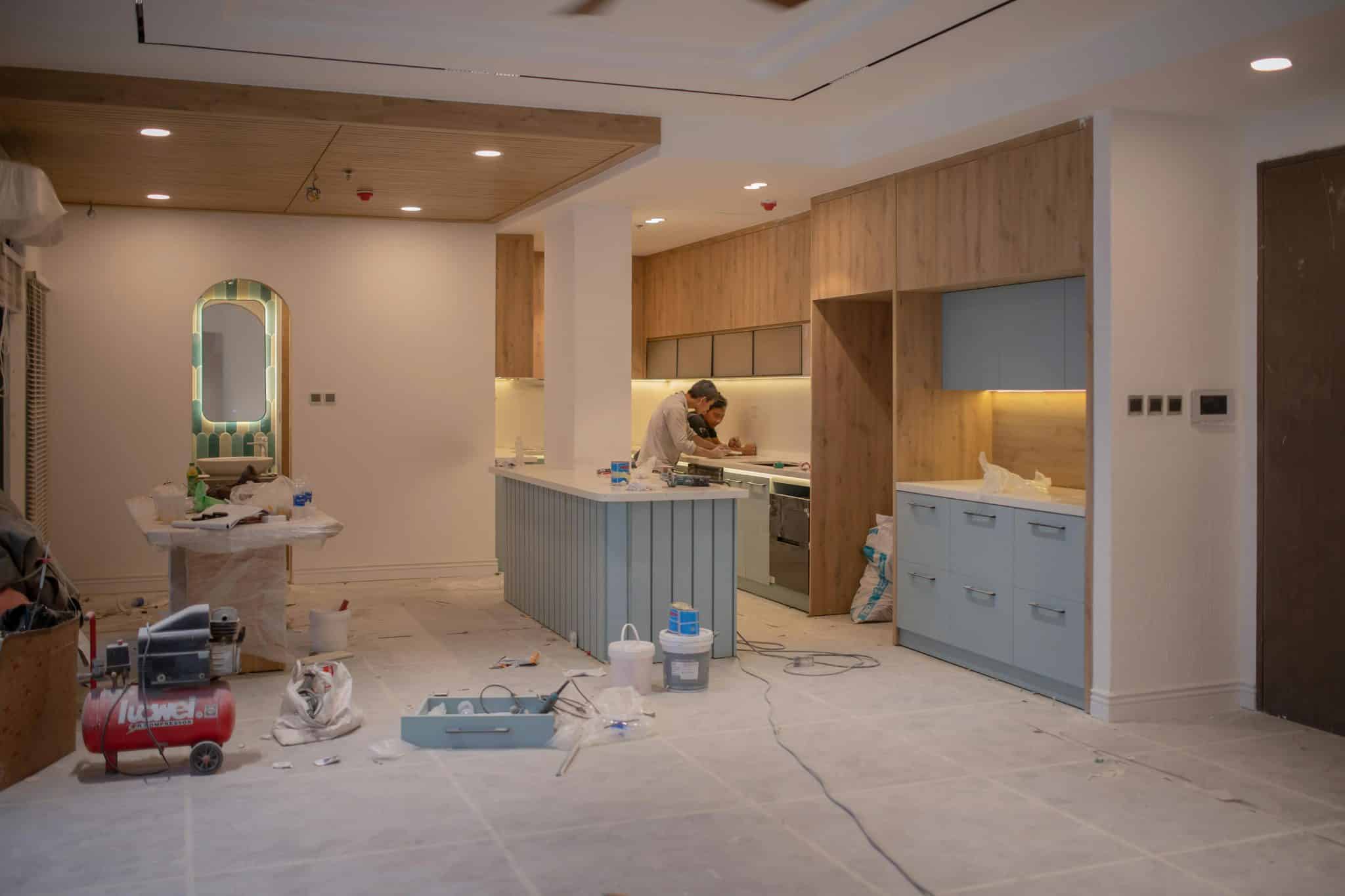I noticed the first settlement crack on a Tuesday morning. It was a thin line running down my basement wall that hadn’t been there the week before.
Like most homeowners, I panicked. Was my house falling apart? Would this cost thousands to fix? After talking to foundation experts and doing my research, I learned something important.
Not all cracks spell disaster. Some are harmless signs of normal settling, while others signal serious structural problems. The key is knowing which is which before you spend money you don’t need to spend.
I’ll share what I learned about identifying settlement cracks, when to worry, and how to protect your home. By the end of this guide, you’ll know exactly what to look for and when to call in the professionals.
What Are Settlement Cracks?
Settlement cracks are splits that form in walls, foundations, or structures when the ground beneath shifts or moves.
These visible lines appear as the house adjusts to soil changes caused by weather, moisture, and time.
The constant expansion and contraction of soil create stress on building materials, eventually showing up as cracks.
Most start small and may remain harmless hairline marks for years, while others widen gradually as conditions change.
They typically appear in concrete, drywall, brick, or stucco surfaces throughout the home. Understanding their characteristics helps homeowners determine when professional evaluation is necessary.
Two Common Types of Settlement Cracks
Not all cracks are created equal. Learning to distinguish between harmless cosmetic cracks and serious structural damage is key to making informed repair decisions.
1. Cosmetic Cracks
These are the “don’t worry about it” cracks that most homeowners see. Cosmetic cracks are usually as thin as a hair and stay the same size over months or years.
They often show up because building materials naturally shrink as they dry out and age. You’ll typically find these small cracks around windows, doors, or where different materials meet.
Cosmetic cracks are mostly about looks, not safety. They might bother you when you’re showing off your home, but they won’t cause structural problems.
A little caulk or paint can usually hide them completely.
2. Structural Cracks
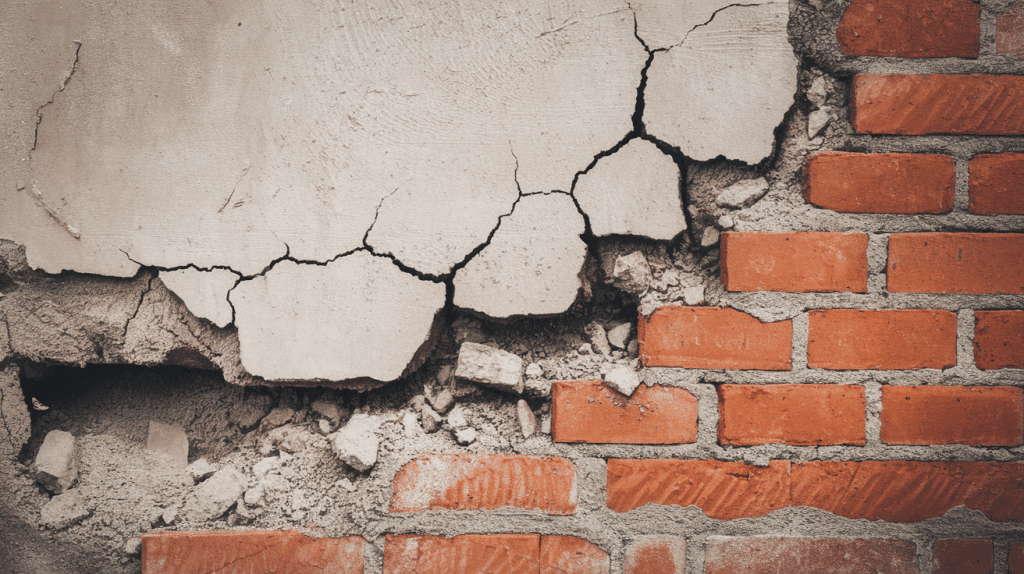
These are the cracks that should grab your attention. Structural cracks are wider, often growing over time, and can signal real foundation problems.
They might start small but get bigger as seasons change or the ground shifts beneath your home.
Look for cracks that you can fit a coin into, ones that seem to grow, or cracks that run in stair-step patterns along brick or block walls.
These cracks can mean your foundation is moving in ways it shouldn’t, which could lead to bigger problems if you ignore them.
How to Spot Settlement Cracks in Your Home?
Knowing where to look and what to check can help you catch settlement problems before they get expensive. Follow this step-by-step plan for spotting trouble:
1. Visual Inspection:
Start with the most common problem areas. Check around doors and windows first since these are crack hot spots. Look at the wall corners where different materials meet.
Don’t forget your basement and foundation walls. These areas show settlement problems earliest. Pay attention to spots where walls meet ceilings, too.
2. Monitor Changes:
Use a pencil to mark both ends of any cracks you find. Take photos with dates to track changes over time.
Measure the crack width with a coin as a reference. Check your marks every few months for movement. Keep a simple log of what you see and when.
3. Professional Assessment:
Call a structural engineer for cracks wider than a quarter. Get expert help if cracks are growing or changing.
Have professionals check if you see multiple new cracks. Ask for an evaluation before buying or selling a home. Don’t wait if you notice doors or windows sticking.
Common Causes of Settlement Cracks
Understanding why settlement cracks happen helps you prevent them and catch problems early.
Soil movement is the most common culprit, especially with clay soils that expand when wet and shrink when dry. This constant movement puts stress on foundations until cracks appear.
Poor construction practices also lead to problems years later. When builders don’t pack soil properly before building or use weak concrete mixtures, the foundation lacks proper support from the start.
Water damage creates another major risk. Broken pipes and poor drainage wash away soil under foundations, causing them to sink. Without stable ground beneath, the foundation shifts and cracks form in walls and floors above.
Cost & Types of Repairing Settlement Cracks
When prevention isn’t enough, you have repair options ranging from simple DIY fixes to major professional work. Your choice depends on the crack size and severity.
DIY Solutions
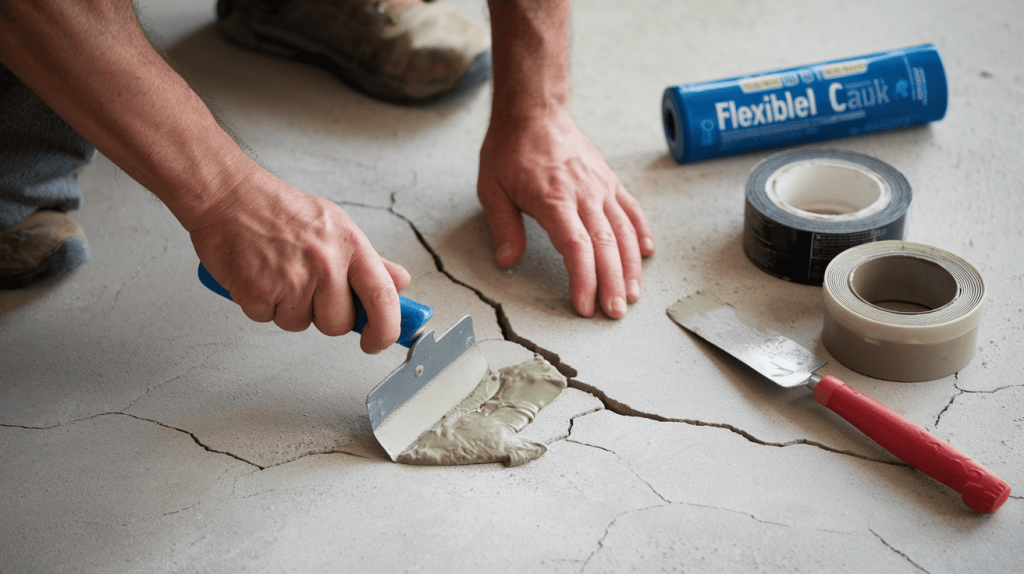
Small cracks can often be fixed with basic materials and weekend effort. These solutions work best for hairline cracks that aren’t growing or changing over time.
| Crack Type | Solution | Cost Range |
|---|---|---|
| Foundation cracks under 1/8 inch | Concrete crack filler | $10-30 |
| Interior wall cracks | Flexible caulk | $5-15 |
| Drywall cracks | Mesh tape and joint compound | $15-40 |
| Small basement cracks | Hydraulic cement | $20-50 |
Professional Repairs
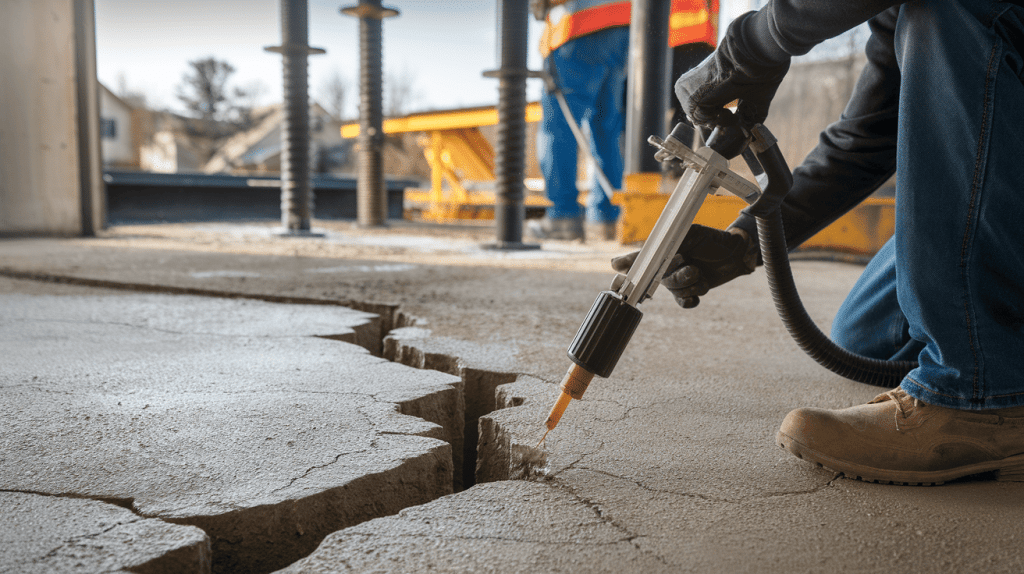
Major foundation problems need expert help with specialized equipment and techniques. These repairs address serious structural issues that could worsen without proper treatment.
| Problem Type | Method | Cost Range |
|---|---|---|
| Minor crack sealing | Injection repair | $500-2,000 |
| Foundation settling | Steel piers | $15,000-25,000 |
| Light structure support | Concrete piers | $10,000-20,000 |
| Severe settling | Foundation lifting | $20,000-35,000 |
| Water damage prevention | Waterproofing system | $3,000-8,000 |
When to Choose Which Option?
- Use DIY for hairline cracks that aren’t growing
- Call professionals for cracks wider than a quarter inch
- Get expert help if multiple new cracks appear
- Address problems early to avoid higher costs later
How to Prevent Settlement Cracks?
Prevention is always cheaper than repair. These simple steps can help you avoid settlement problems before they start.
Proper Drainage
- Direct gutters and downspouts away from the foundation.
- Clean gutters regularly to prevent overflow.
- Extend downspouts at least six feet from the house.
- Make sure the yard slopes away from the foundation.
Soil Maintenance
- Keep soil moisture levels steady year-round.
- Avoid excessive watering or drying around the foundation.
- Don’t plant large trees too close to the house.
- Tree roots can disturb the soil and dry ground.
Regular Inspections
- Walk around your home twice yearly for new cracks.
- Check how doors and windows open and close.
- Small operation changes signal foundation movement.
- Schedule periodic professional checks.
Conclusion
Your home’s foundation is one of its most important structural elements, and protecting it doesn’t require expert knowledge. Simple steps like proper drainage, regular inspections, and quick responses to warning signs can prevent small issues from becoming major problems.
The difference between a minor repair and extensive foundation work often comes down to timing. Small cracks caught early stay manageable. Ignored problems grow into serious structural issues.
Don’t let settlement cracks control your peace of mind. You now have the tools to spot problems before they spiral out of control.
Remember that most settlement cracks are normal parts of home ownership. With the right knowledge and regular attention, you can keep your home structurally sound for years to come.
Frequently Asked Questions
Are Settlement Cracks Serious?
Most settlement cracks are not serious and are normal parts of home settling. However, wide cracks that grow over time can signal foundation problems requiring professional attention.
How Can You Tell if A Crack Is Structural?
Structural cracks are wider than a quarter inch, grow over time, or run in stair-step patterns. They often appear with sticking doors or sloping floors.
What Cracks Are Acceptable?
Hairline cracks that stay the same size are usually acceptable. Small cracks around windows, doors, or where different materials meet are typically cosmetic and harmless.

